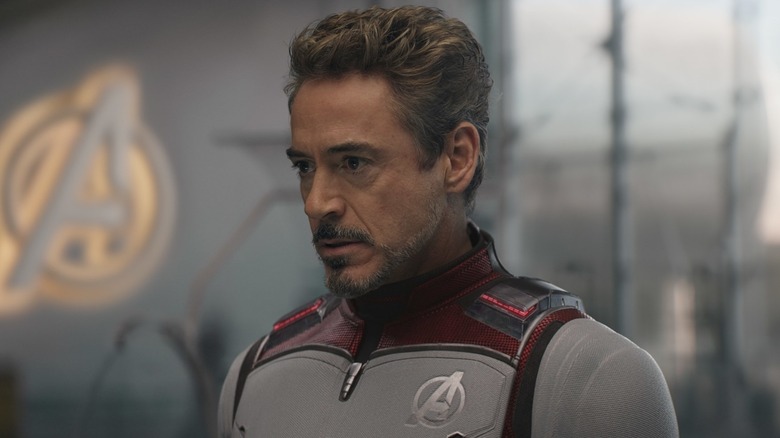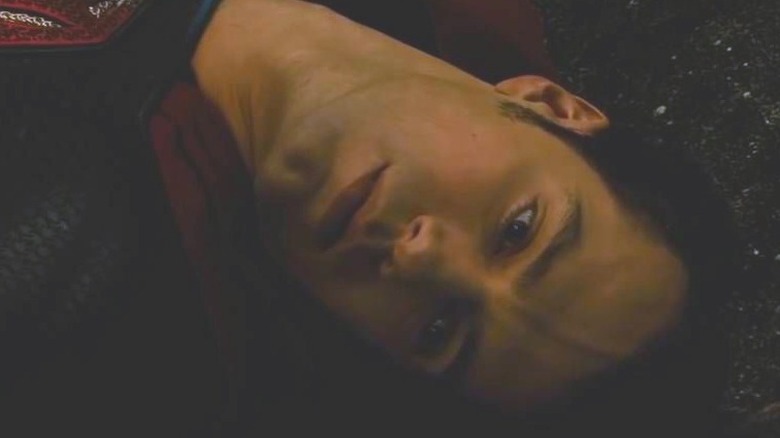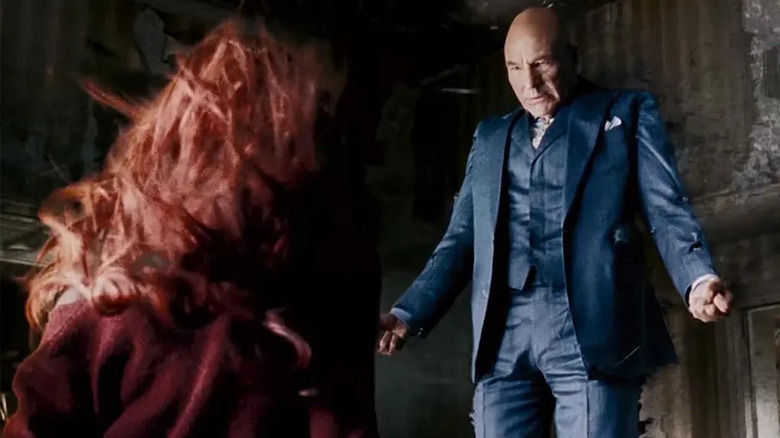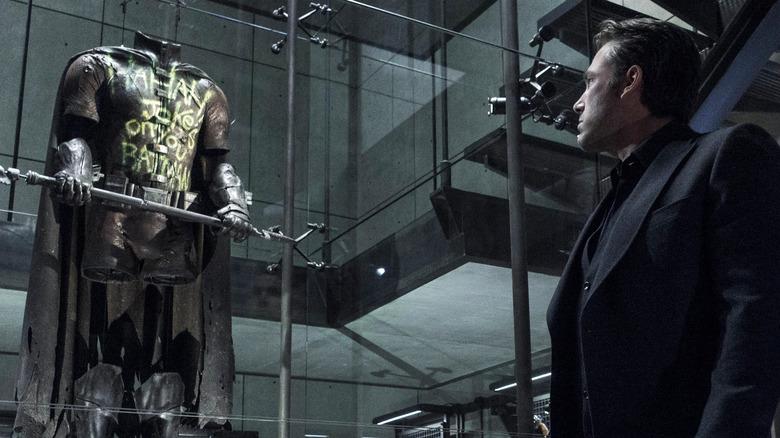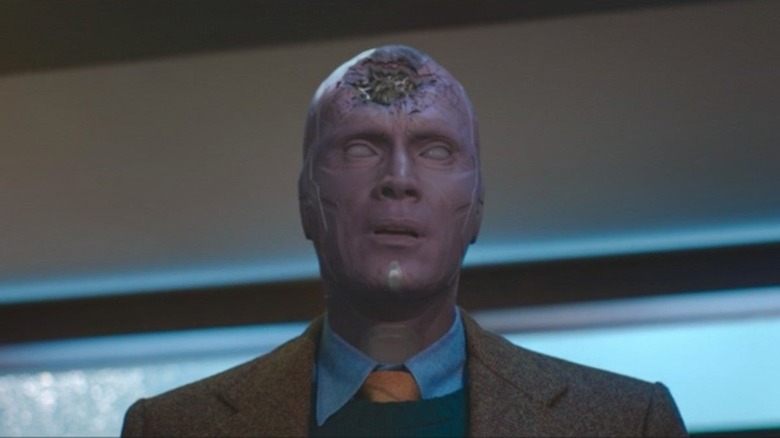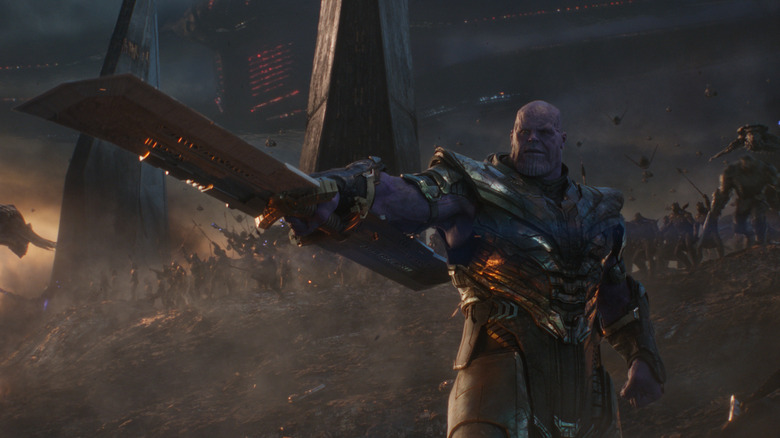Superheroes The Entertainment Industry Can't Stop Killing
For decades and decades, serialized stories about superheroes have captivated audiences. That's been especially true at movie theaters and on television in the 21st century. Though there are signs that superhero fatigue may be setting in, the genre is still the dominant force at the box office. Many of the same characters that were popular in, say, the 1930s or 1960s have remained at the center of pop culture through the years since. Batman made his debut in 1939 and appeared in his most recent solo movie ("The Batman") in 2022, as well as being a supporting character in 2023's "The Flash." Meanwhile, Spider-Man, whom readers first met in 1962, has been heavily featured in no fewer than 13 feature films since 2002.
But, as is the case in comic books, story arcs in movies, TV shows, and video games don't go on forever. There are only so many ways to start fresh with the same set of characters. Sometimes, studios move on with new directors or lead actors. However, another device that superhero stories use to proceed in a different direction is killing major characters off. The prevalence of plots involving multiverses and branching timelines in DC and Marvel properties only increases the opportunities for the powers that be to kill off fan-favorite heroes and villains. In fact, some comic book characters have become infamous precisely because they're so prone to dying, leaving filmmakers little choice but to follow the source material.
Pretty much every major hero and villain has died at least a couple of times in the comics, but these are the superheroes that the rest of the entertainment industry can't seem to stop killing.
Superman
Superman is the archetypal superhero. His name literally describes him as a being who's superior to us humans. An alien from the planet Krypton, Superman — whose real name is Kal-El and whose Earthly alias is Clark Kent — boasts super strength, speed, vision, hearing, and mental capacity, not to mention the ability to fly. He's practically indestructible, save for his one weakness, which even casual fans of comic books can name. Counterintuitively, Kryptonians are vulnerable to the radiation of Kryptonite. Still, his healing factor helps Kal-El recover whenever he does suffer damage. But those out-of-this-world stats aren't always enough to keep Superman alive.
The character has died more than a dozen times in comics books, dating back to 1961's "The Death of Superman" (a so-called "imaginary" story later re-fashioned as an alternate universe tale) and most notably in 1993 at the hands of Doomsday. His luck has run out on screen multiple times, too. He (temporarily) succumbs to Kryptonite in a 1985 episode of the animated series "Super Friends" also titled "The Death of Superman." Two more animated series, "Justice League" and its sequel, "Justice League Unlimited," also kill Superman, or at least appear to.
The 2007 animated film "Superman: Doomsday" is a loose adaptation of the 1993 storyline. Lex Luthor does him in during one timeline of the "DC Universe Online" video game, and Darkseid gets him in an alternate ending of "Injustice 2." In the Arrowverse crossover "Crisis on Infinite Earths," Lex Luthor goes on a multiversal Superman killing spree. And of course, 2016's "Batman v. Superman: Dawn of Justice" sees Kal-El impaled by a Doomsday-like creature. He dies but is later revived in 2017's "Justice League."
Iron Man
Tony Stark, AKA Iron Man, is infinitely more human than Superman, but he's as essential to the Marvel Cinematic Universe and the Avengers as Superman is to the DCEU and the Justice League. In fact, the fine line between his abilities and his vulnerabilities is part of what makes him so relatable (it's certainly not his tycoon father or billions of dollars). He becomes Iron Man because of a near-death experience, turning a would-be fatal chest injury into a superhuman body modification with the arc reactor and his ever-expanding collection of super suits. From there, he has more brushes with death than arguably any other major superhero. He's still flesh and bone under all the tech, which is prone to malfunctioning, and he comes close to dying from palladium poisoning and from pushing the limits of what his suits can do.
Iron Man dies repeatedly in the comics, but we've also seen him die (and almost die) on screen, especially in the last few years. In the 2006 animated movie "Ultimate Avengers 2," he appears to be a goner, but he's brought back by Thor. This scene is eerily similar to the one in which Tony falls to Earth at the end of 2012's "Avengers." More recently, variants of Iron Man are killed in Episodes 3, 5, 6, and 8 of the Disney+ series "What If...?" But none of those hold a candle to what is perhaps the most iconic and heartbreaking moment in the entire MCU. Iron Man dies in "Avengers: Endgame," voluntarily snapping his fingers while wearing the Infinity Gauntlet, to sacrifice himself for real and save the world.
Professor X
Charles Xavier, also known as Professor X, is usually portrayed as being in his golden years to begin with, so maybe it shouldn't come as a surprise that he's one of the superheroes who dies most frequently on screen. The comic book character has been around since 1963, and — despite existing for three fewer decades — he's been killed nearly as many times as Superman. Movie audiences first met the live-action Xavier (Patrick Stewart) in 2000's "X-Men," and a more youthful version (James McEvoy) arrived in 2011's "X-Men: First Class." That film reveals that Professor X cheated death and became paralyzed, adopting his familiar wheelchair, after a bullet meant for Magneto ricocheted into his spine.
The character dies three times in the 20th Century Fox "X-Men" franchise, and once more for good measure in 2022's "Doctor Strange in the Multiverse of Madness." He loses his battle against a Dark Phoenix-possessed Jean Grey, who obliterates him into nothing in 2006's "X-Men: The Last Stand." 2014's "X-Men: Days of Future Past" serves as a bridge between the original trilogy and the soft reboot, and in that film, the elder Xavier dies in the battle against the Sentinels so that the younger one can live on in a new timeline. His most permanent and tragic death comes in 2017's "Logan," in which he's brutally killed by X-24, a violent clone of Wolverine. Finally, Earth-838's Professor X has his neck snapped, mentally and physically, by Wanda in the "Doctor Strange" sequel.
Batman and Robin
Batman is one of the most famous superheroes of all time and probably the most famous comic book character who doesn't actually have a superpower. He's had his fair share of deaths on the page and on the screen, too. A version is killed in the Arrowverse, and most recently, Michael Keaton's Bruce Wayne is slain over and over again by General Zod in "The Flash." But his right-hand man (or boy), Robin, bites the dust pretty often, too. He's more disposable than the Caped Crusader because several different characters have donned Robin's costume and assumed his identity over the years.
Robin's death is typically a motivating factor for Batman. A 2020 interactive animated movie, "Batman: Death in the Family," puts this theory into practice. Depending on the choices the viewer makes, both Batman and Robin can get themselves killed. In "Batman v. Superman: Dawn of Justice," a mournful and vengeful Batman (Ben Affleck) keeps the dead Robin's vandalized suit in the Batcave. This Dick Grayson — who never actually appears in the DCEU — was murdered by the Joker and Harley Quinn.
Of course, no property kills off Batmen and Robins with more frequency or glee than the absurdist animated comedy series "Teen Titans Go!" In the show, Robin falls off of a mountain, suffers a heart attack, gets decapitated and disintegrated, drowns, and dies from old age, exploding dynamite, skull removal, and the death penalty. At other points, Batman is turned into a turkey, burned with acid, and cut in half with a laser.
Loki
Loki may not have started out as a hero, but he's become a fan-favorite MCU character, thanks in no small part to the charismatic and talented Tom Hiddleston. He's even got his own Disney+ series to show for it. In the comics, he's killed about half a dozen times, including once by Gorr, the God Butcher. He "dies" almost as often in the MCU, though his status as the God of Mischief makes him resilient even in the case of most mortal wounds. Odin's other son, the God of Thunder, thinks his brother has perished in 2011's "Thor" when he falls into an abyss from the broken Bifröst. But he returns in 2013's "Thor: the Dark World," in which he gets himself impaled and seemingly killed by the lieutenant of the Dark Elves, Kurse. Of course, Loki survives that fight too, though we don't find out how until his eponymous television show.
Loki gets as close to a real death as he probably ever will in 2018's "Avengers: Infinity War" when Thanos chokes the life out of him. However, the time heist in 2019's "Avengers: Endgame" results in a past-tense and still-alive Loki escaping from the so-called "Sacred Timeline." That sets up the premise for the "Loki" series. Our antihero protagonist survives Season 1 of the show, but not all of his variants do. Classic Loki, as played by Richard E. Grant, is defeated while heroically fending off Alioth in Episode 5 so that the main Loki can reach Kang's Citadel. And in Loki Season 2, the trickster is back up to more mischief.
Vision
Vision is a vibranium-based synthezoid who sprung from Ultron's coding and the Mind Stone. Basically, he's an AI in extremely reinforced human-ish form, so whether or not he was ever actually alive in the first place is, in and of itself, up for debate. But none of that stops Wanda Maximoff from loving him, so for the purposes of this exercise, his sentience counts. Most of the time, it's female characters who die so that male characters have someone to grieve and something to fight for. It's kind of refreshing that Vision gets fridged so often in the MCU, and mostly so that Elizabeth Olsen's Scarlet Witch can act her heart out in some killer dramatic scenes.
Viz dies twice in "Avengers: Infinity War" alone. Wanda forces herself to destroy the Mind Stone in his forehead in an effort to stop Thanos from hunting down all the Infinity Stones. Devastatingly, she succeeds, only to have the big purple villain use the Time Stone to rewind the clock. Wanda must relive Vision's death all over again, though this time, her beloved falls when Thanos gets his hands on the little yellow crystal.
In "WandaVision," she's mysteriously revived him. Eventually, we learn she was able to do so through a combination of Chaos Magic and being exposed to the Mind Stone. When she does the right thing and destroys her magical "hex," her husband ceases to be as well. In "Marvel's What If...?" Episode 5, Viz dies after ripping the Mind Stone out of his own head.
Black Widow
Along with Iron Man and Gamora, Natasha Romanoff, AKA Black Widow, has one of the most impactful deaths in the MCU through the end of Phase 3. While an alternate timeline version of Gamora remains active in the franchise, we only ever get to see Natasha again in the sort-of prequel "Black Widow," which was released in 2021. But even as we watched her sister Yelena (Florence Pugh) kick butt, we knew she wasn't coming back. That's because, as skilled as the Russian assassin is, she's only human. And after "Avengers: Endgame," she's definitely dead for good.
In the comics, this femme fatale dies more than once, sometimes at the hands of her fellow Avengers (Hawkeye and an evil Captain America both get a turn). The MCU's Black Widow only properly dies once after a skirmish with Clint Barton on Vormir. Since the old friends genuinely love each other, whoever plummets to their death will reveal the Soul Stone. Natasha "wins" and winds up lifeless on the ground below, while a traumatized Hawkeye must return to the Avengers with the stone and the sad story.
Fans of the character remain annoyed that she never gets a proper funeral like Tony Stark's, though we do visit her grave in a post-credits scene from her standalone movie. Black Widow is also one of the characters who dies in "Marvel's What If... ?" when she's killed by Hank Pym in Episode 3. She then dies and becomes a zombie in Episode 5.
Jean Grey
Jean Grey is a character who's all but designed to die, rinse, and repeat. The dangerously psionic mutant was introduced as a comic book character in 1963 (back then, her alias was Marvel Girl). She sort of dies but returns as the Phoenix in 1975's "Uncanny X-Men" #101, starting something of a trend. Grey's association with the Phoenix — or Dark Phoenix Force — means she powers up and burns out in a predictable and involuntary cycle, just like her mythological namesake.
The comic storylines have provided a great deal of inspiration for the "X-Men" films and both Famke Janssen and Sophie Turner's takes on the character. She appears to die saving the other X-Men as she holds back and is ultimately engulfed by a flooding dam in 2003's "X2: X-Men United." Though her team mourns her, she's far from gone, and much more becomes of Jean Gray in the next movie after she's resurrected by her Dark Phoenix powers.
After she wreaks havoc in "X-Men: The Last Stand," Wolverine has no choice but to stab her with his claws, killing the Dark Phoenix for good — or at least, until the reboot. Turner's younger Jean transforms into the fictional firebird again at the end of 2019's "Dark Phoenix." The character is taken over by the Phoenix Force and undergoes versions of the death and resurrection cycle in both the Marvel Animated Universe and Marvel Anime as well. She's also a playable character in many "X-Men" video games, but Charles Xavier kills her as part of the plot of "X-Men: Destiny."
Some villains die a lot too
It's not just the good guys who lose their lives regularly in superhero stories. As a rule, it's the villains who typically expire at the conclusions of movies, TV shows, and video games based on comic books. Supervillains especially should watch their backs. Characters like the Joker and Thanos have been killed off in the pages of the comics and on screen at least as often as their good-guy counterparts.
From 1989's "Batman" to 2021's animated "Injustice" film, the Joker has died at least 10 times across TV, movies, and games. In the MCU alone, Thanos dies (sort of) at the hands of his daughter Gamora, and at the edge of Thor's axe, then finally from Iron Man's snap. He also dies in two episodes of "Marvel's What If...?" Multiple variants of the MCU's Kang the Conqueror have already been killed in "Loki" and 2023's "Ant-Man and the Wasp: Quantumania." Corey Stoll's Darren Cross has been defeated twice, first as Yellowjacket in 2015's "Ant-Man" and then again as M.O.D.O.K. in the third film in the Scott Lang-focused trilogy. With so many new Marvel and DC projects planned to release over the next few years, audiences can be sure that this won't be the end of heroes and villains meeting their untimely deaths, or the end of them inevitably returning.
